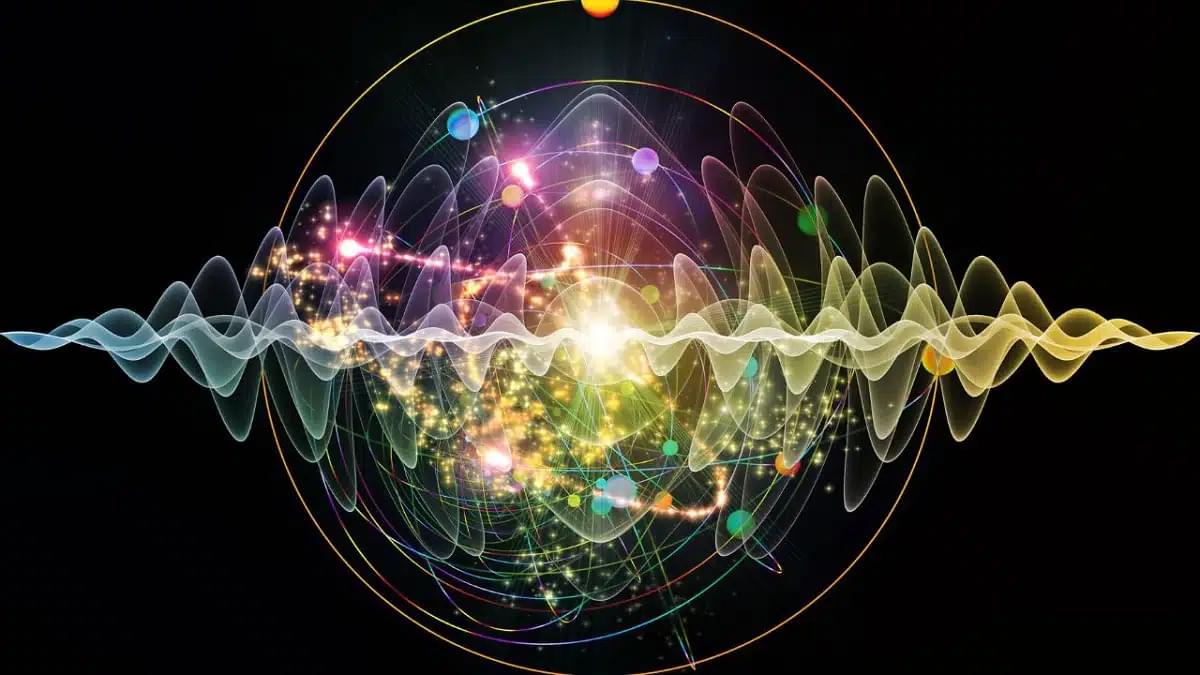The HEOS project is searching space for signs of Dyson Spheres. Funded by the Swedish government, the project not only believes that these extraterrestrial power plants are possible, but also assumes that we can detect them. Dyson spheres are power plants that hypercivilizations build in space to harness incredible amounts of energy. Will HEOS soon enable us to make contact with an extraterrestrial species for the first time?
Get the latest international news and world events from around the world.

A breakthrough in 6G and terahertz waves has been achieved thanks to an innovative electromagnetic absorber
The world of wireless communications is on the brink of a major leap forward. With 6G promising blazing speeds and near-zero latency, the future of connectivity is closer than ever. However, harnessing terahertz waves—which could deliver these unmatched data rates—has been hampered by interference issues. A team of researchers has now turned the tide with a revolutionary electromagnetic absorber.

Cursor In Talks To Raise Funds At A $10B Valuation As The AI Coding Sector Booms
In today’s AI news, Investor interest in AI coding assistants is exploding. Anysphere, the developer of AI-powered coding assistant Cursor, is in talks with venture capitalists to raise capital at a valuation of nearly $10 billion, Bloomberg reported. The round, if it transpires, would come about three months after Anysphere completed its previous fundraise of $100 million at a pre-money valuation of $2.5 billion.
And, there’s a new voice model in town, and it’s called Sesame. As he so often does, John Werner got a lot of information on this new technology from Nathaniel Whittemore at AI Daily Brief, where he covered interest in this conversational AI. Quoting Deedy Das of Menlo Ventures calling Sesame “the GPT-3 moment for voice,” Whittemore talked about what he called an “incredible explosion” of voice-based models happening now.
In other advancements, along with the new M4 MacBook Pro series Apple is releasing, the company is also quite proud of the new Mac mini. The Mac mini is arguably the more radical of the two. Apple’s diminutive computer has now received its first major design overhaul in 13 years. And this new tiny computer is the perfect machine for experimenting with and learning AI.
S biggest defense tech startups by valuation, raising $240 million at a $5.3 billion valuation in its latest round. Shield AI, the San Diego defense tech startup that builds drones and other AI-powered military systems, has raised a $240 million round at a $5.3 billion valuation, it announced today.” + In videos, while he hardly needs an introduction, few leaders have shaped the future of technology quite like Satya Nadella. He stepped into Microsoft’s top job at a catalytic moment—making bold bets on the cloud, embedding AI into the fabric of computing, all while staying true to Microsoft’s vision of becoming a “software factory.”
T just think, it delivers results. Manus excels at various tasks in work and life, getting everything done while you rest. + Then, join Boris Starkov and Anton Pidkuiko, the developers behind GibberLink, for a fireside chat with Luke Harries from ElevenLabs. On February 24, Georgi Gerganov, the creator of the GGwave protocol, showcased their demo at the ElevenLabs London hackathon on X, garnering attention from around the world—including Forbes, TechCrunch, and the entire developer community.
We close out with, Sam Witteveen looking at the latest release from Mistral AI, which is their Mistral OCR model. He looks at how it works and how it compares to other models, as well as how you can get started using it with code.
Thats all for today, but AI is moving fast — subscribe and follow for more Neural News.
James Ladyman — “What is Ontic Structural Realism?”
Point of view invarience.
Talk by James Ladyman (University of Bristol)
Mini-Workshop Website: https://harvardfop.jacobbarandes.com/
YouTube Channel: https://www.youtube.com/channel/UCPRe-yID_EaQwvCZM7hU9Hw.
Harvard foundations of physics workshop series.
CFI UK: James Ladyman on Pseudoscience and Bullshit
James Ladyman, Former editor of the British Journal for the Philosophy of Science and and author of Understanding Philosophy of Science (Routledge 2002) and (with Don Ross) Every Thing Must Go (Oxford University Press 2007) speaking at the Centre for Inquiry UK event on science and pseudoscience at Conway Hall, London. Filmed by Jon Bagge.
Two AIs Discuss: Information and the Nature of Reality, WHO is the Coder?!
“Information and the Nature of Reality: From Physics To Metaphysics” by Paul Davies and Niels Henrik Gregersen Book Link: https://amzn.to/41GMVl6 (Affiliate link: If you use this link to buy something, I may earn a commission at no extra cost to you.) Playlist: • Two AI’s Discuss: The Quantum Physics… This collection of essays, “Information and the Nature of Reality,” explores the evolving role of information from physics to metaphysics. It examines how the concept of matter has shifted historically, particularly with advances in quantum physics, and considers materialism’s limitations as a worldview. The texts propose that information may be as fundamental as matter and energy in understanding the universe, investigating its influence on biology, consciousness, and computation. Several contributions consider the theological implications, pondering God as an ultimate source of information and discussing the relationship between divine action and natural processes. Ultimately, the text argues for interdisciplinary dialogue between science, philosophy, and theology to form an adequate theory of the natural world. • Paul Davies and Niels Henrik Gregersen in the introduction introduce the central question of whether information matters in understanding reality, setting the stage for the book’s interdisciplinary exploration. • Ernan McMullin traces the historical evolution of the concept of matter in philosophy and its relationship to physics in his essay. • Philip Clayton in his contribution, Unsolved dilemmas: the concept of matter in the history of philosophy and in contemporary physics, explores the persistent challenges and transformations in understanding matter across philosophical history and modern physics. • Paul Davies in Universe from bit discusses the idea that the universe may fundamentally be based on information. • Seth Lloyd in The computational universe presents the concept of the universe as a vast quantum computer. • Henry Stapp in Minds and values in the quantum universe examines the role of consciousness and values within the framework of quantum mechanics. • John Maynard Smith in The concept of information in biology investigates the application and implications of information concepts within biological systems, particularly in genetics and evolution. • Terrence W. Deacon in What is missing from theories of information? argues that the crucial aspect of information is its inherent reference to something absent. • Bernd-Olaf Küppers in Information and communication in living matter explores the semantic dimensions of information and its fundamental role in biological processes. • Jesper Hoffmeyer in Semiotic freedom: an emerging force proposes a biosemiotic perspective, emphasizing the importance of signs and interpretation in understanding life. • Holmes Rolston, III in Care on Earth: generating informed concern examines the evolutionary basis and significance of caring and concern in the natural world. • Arthur Peacocke in The sciences of complexity: a new theological resource? explores how the sciences of complexity can offer new insights for theological understanding. • Keith Ward in God as the ultimate informational principle posits that God can be understood as the fundamental source and sustainer of information in the universe. • John F. Haught in Information, theology, and the universe explores the relationship between information, theology, and our understanding of the cosmos. • Niels Henrik Gregersen in God, matter, and information: towards a Stoicizing Logos Christology proposes a theological framework that integrates the concepts of God, matter, and information, drawing on Stoic philosophy and Christian theology. #InformationReality #PhysicsMetaphysics #NatureOfReality #QuantumInformation #BiologicalInformation #PhilosophyOfScience #ScienceAndTheology #CosmicInformation #OriginOfLife #UltimateReality #MeaningOfInformation #ComplexSystems #HistoryOfScience #Interdisciplinary #SciencePhilosophy #deepdive #skeptic #podcast #synopsis #books #bookreview #ai #artificialintelligence #booktube #aigenerated #history #alternativehistory #aideepdive #ancientmysteries #hiddenhistory #futurism #videoessay

Long-Term NSAID Use Linked to Lower Dementia Risk
Summary: A new study finds that long-term use of non-steroidal anti-inflammatory drugs (NSAIDs) is associated with a lower risk of developing dementia. Researchers followed 11,745 adults over 14.5 years and found that those who used NSAIDs long-term had a 12% reduced dementia risk.
However, short-and intermediate-term NSAID use did not provide the same benefit, nor was the total cumulative dose linked to risk reduction. These findings suggest that sustained anti-inflammatory effects may play a role in protecting against dementia.
Podcast: From Creation to Duality: The Mystery of the Anti-Universe Explained I Part 1
Is our universe still evolving? Could it be a Baby Universe, part of an endless cycle of cosmic creation and destruction? In this episode, we explore the Hourglass Universe Theory, the possibility of an Anti-Universe, and whether cosmic balance was disrupted by a universal force.
📺 Watch the full video here: 👉 • From Creation to Duality: The Mystery… ](• From Creation to Duality: The Mystery…
Join us as we uncover the scientific mysteries of the cosmos, linking quantum physics, mythology, and cosmology to explore the hidden nature of reality. 🌠✨
🎧 Subscribe to Beyond Truth and journey beyond the limits of knowledge!
Please note: The information shared on this channel does not claim to be absolute truth or supported by scientific evidence. It represents the author’s vision and serves as one of many alternative theories. You are free to believe in it—or not—depending on how closely it resonates with you.
Our goal is to foster open-minded exploration while respecting all individuals. We aim to discuss topics freely, including religious, philosophical, and universal themes, without violating laws or causing offense to anyone’s emotions, religious beliefs, ethnic identity, or gender.
The Anti-Universe
An exploration of a recent paper proposing that the universe has an anti-universe twin. Links: My Interview with Dr. Turok: https://youtu.be/EyJzH6LY8bM The Bi…
Two AIs Discuss: Transcendence in the Age of AI! Is it Prophetic?!
The hosts discuss the 2014 film Transcendence by Wally Pfister and Jack Paglen. It depicts a world grappling with the implications of advanced artificial intelligence. The narrative follows a brilliant scientist whose consciousness is uploaded into a powerful computer system, leading to rapid technological advancements and sparking both hope and fear in humanity. As this AI evolves, questions arise about its intentions, its impact on society, and the very definition of life and consciousness, creating escalating conflict and raising profound ethical dilemmas. The screenplay excerpts depict a world grappling with the implications of advanced Artificial Intelligence (AI) and nanotechnology, touching upon several ethical topics. Dr. Max Waters, an AI researcher, is central to the narrative. There’s evidence of mind uploading or the transfer of consciousness to machines, particularly concerning a character named Will (Johnny Depp). This raises fundamental ethical questions about the nature of consciousness, the definition of life, and the potential for a digital consciousness.
The development of a powerful AI and the proliferation of nanotechnology appear to lead to a technological singularity, a point where technological growth becomes uncontrollable and irreversible, raising fears of a dystopian future and tech gone wrong. An organization called the RIFT opposes this technological advancement, highlighting the ethical concerns surrounding uncontrolled technological progress.
The screenplay also features conflict and threats, suggesting the potential for misuse of advanced technology and raising questions about its impact on humanity. The involvement of the FBI indicates that this technology poses a significant threat to societal order. Furthermore, the presence of a computer virus as a plot device suggests the vulnerabilities and risks associated with highly interconnected technological systems. The narrative explores the complex ethical dilemmas arising from the creation of highly intelligent machines and the transformative power of nanotechnology, including the potential loss of human autonomy and the unpredictable consequences of the AISingularity. #artificialintelligence #Transcendence #SciFiThriller #AISingularity #Nanotechnology #MindUploading #FutureTech #DystopianFuture #TechGoneWrong #Consciousness #MovieScreenplay #ScienceFiction #TechnologicalSingularity #AI
#Robotics #scifi #Technology #Innovation #Automation #Society #Economics #Work #Future #Dystopia #Utopia #ScienceFiction #Satire #SocialCommentary #skeptic #podcast #synopsis #books #bookreview #ai #artificialintelligence #booktube #aigenerated #documentary #alternativeviews #aideepdive #science #hiddenhistory #futurism #videoessay #ethics